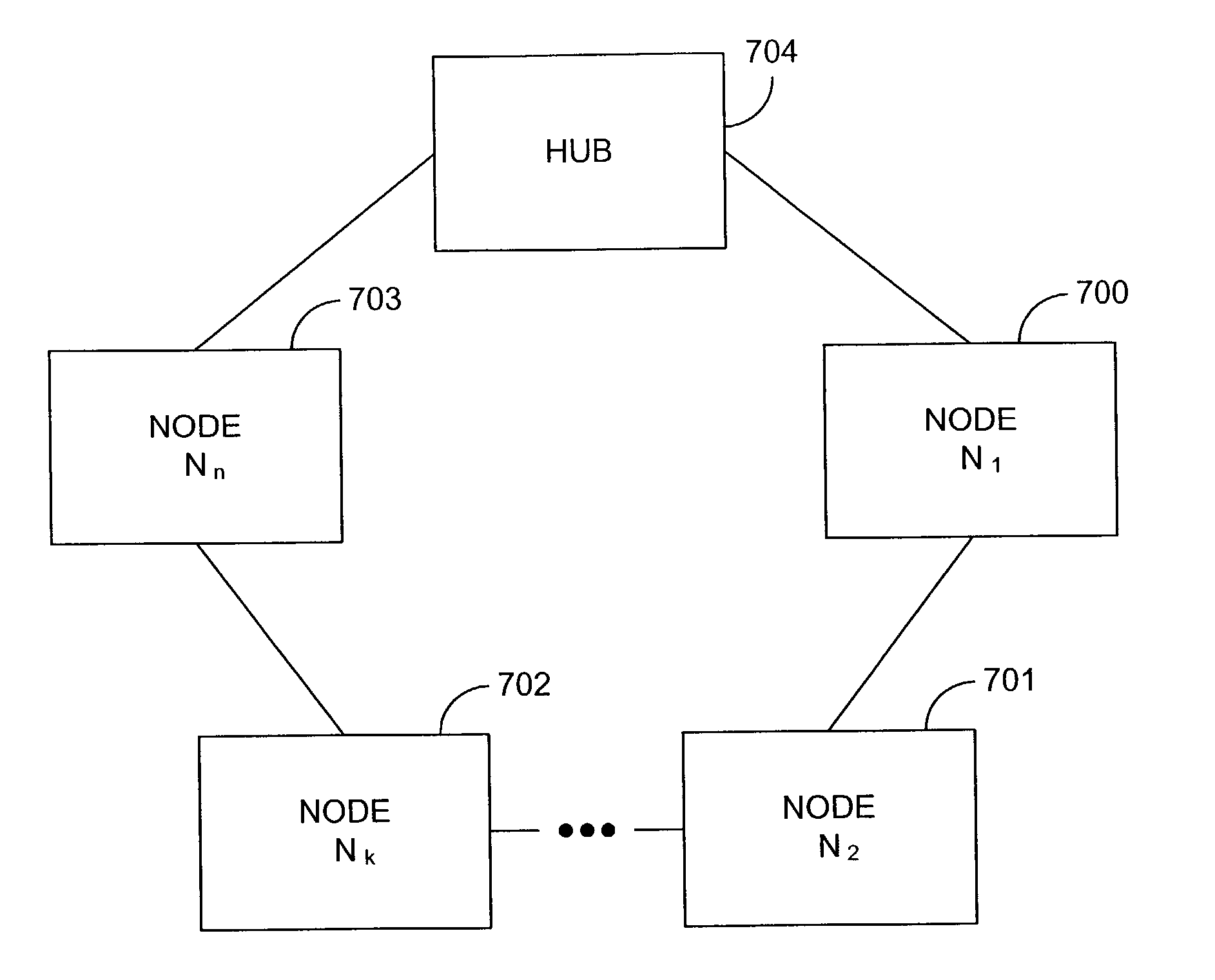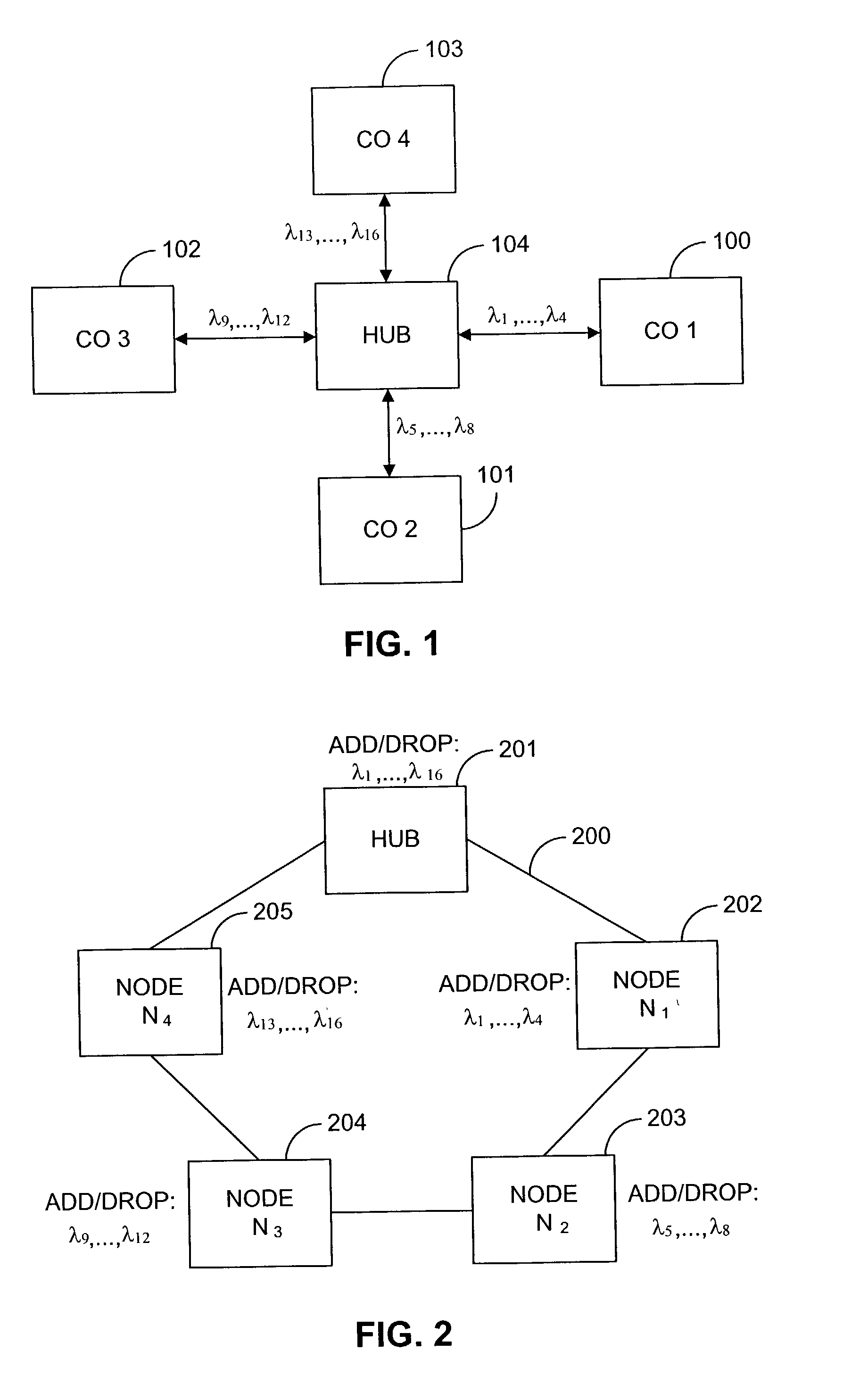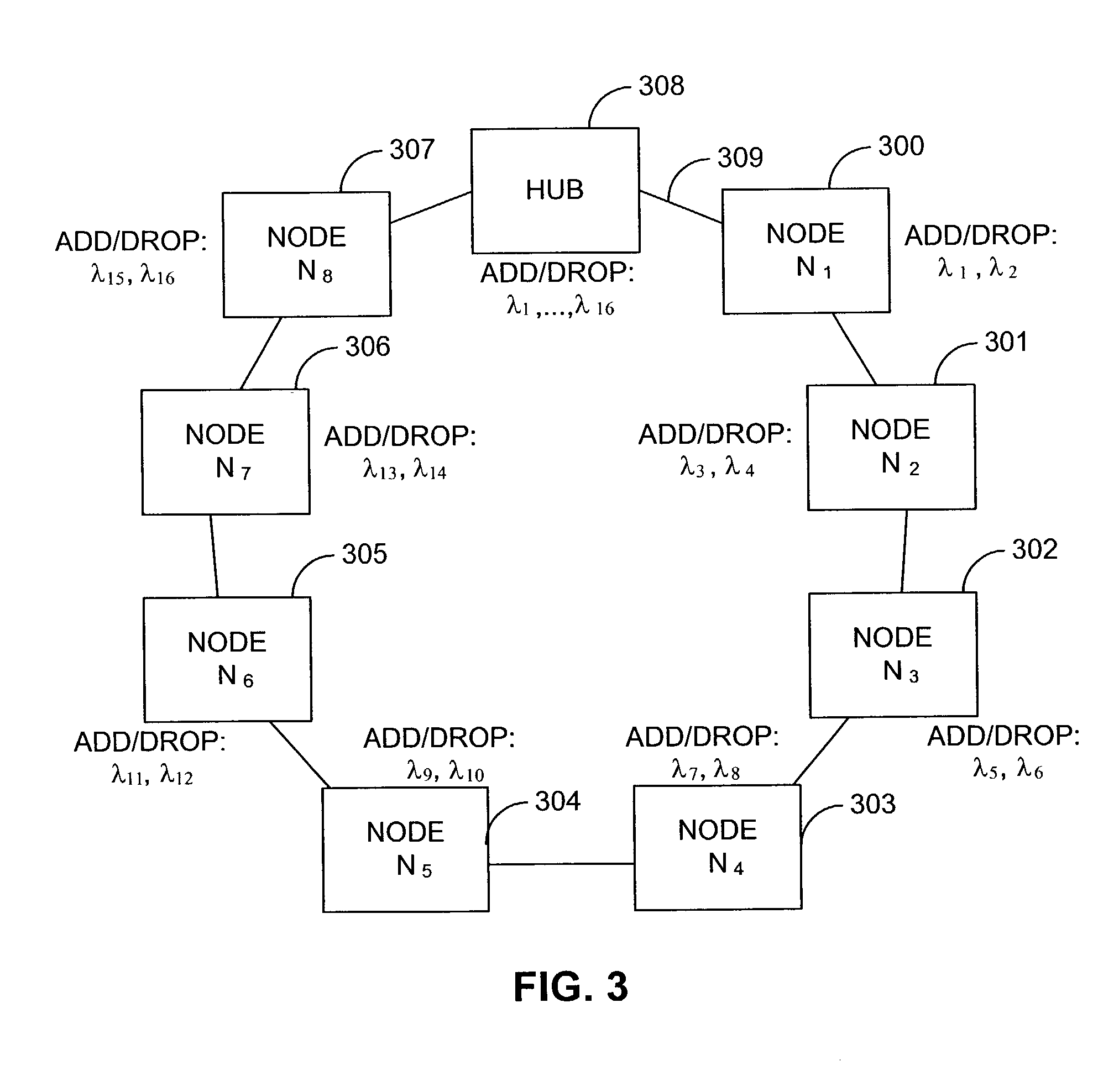Coarse wavelength division multiplexing system
a wavelength division and multiplexing technology, applied in the field of communication, can solve the problems of increasing the cost of the system, increasing the bandwidth of optical fibers, and increasing the data rate, and achieve the effect of maximizing the coverage of the optical communication network
- Summary
- Abstract
- Description
- Claims
- Application Information
AI Technical Summary
Benefits of technology
Problems solved by technology
Method used
Image
Examples
Embodiment Construction
[0037]The invention now will be described more fully with reference to the accompanying drawings. The invention may, however, be embodied in many different forms and should not be construed as being limited to the embodiments set forth herein; rather, these embodiments are intended to convey the concepts and principles of the invention to those skilled in the art. Furthermore, all “examples” given herein are intended to be non-limiting.
[0038]CWDM is capable of enabling multi-wavelength optical systems to be introduced into metropolitan (metro) networks inexpensively. Compared to DWDM, CWDM achieves cost reduction via the use of cheaper wide-channel spacing filters. These wide-channel spacing filters allow less expensive non-cooled lasers to be used in CWDM systems. However, because CWDM systems are non-amplified, the attainable system reach currently is severely limited by filter and fiber attenuation losses.
[0039]The wavelength assignment system of the present invention presents a ...
PUM
 Login to View More
Login to View More Abstract
Description
Claims
Application Information
 Login to View More
Login to View More - R&D
- Intellectual Property
- Life Sciences
- Materials
- Tech Scout
- Unparalleled Data Quality
- Higher Quality Content
- 60% Fewer Hallucinations
Browse by: Latest US Patents, China's latest patents, Technical Efficacy Thesaurus, Application Domain, Technology Topic, Popular Technical Reports.
© 2025 PatSnap. All rights reserved.Legal|Privacy policy|Modern Slavery Act Transparency Statement|Sitemap|About US| Contact US: help@patsnap.com



